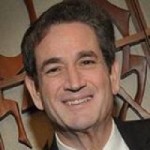By Rabbi Ben Kamin

OCEANSIDE, California — More than fifty-two years ago, a Dallas businessman named Abraham Zapruder unwittingly filmed the assassination of President John F. Kennedy. The 26.6 seconds of silent color 8mm imagery would remain the most examined film in history for decades. When it was eventually shown on television to the American public, the obvious reactions were shock, repulsion, and disbelief.
You can now log on to the web at your leisure and watch the 486 Kodachrome frames of this horror. Kids do it regularly—and they can also call up once-sealed photos of the lifeless president, his eyes open in death, lying on the coroner’s slab.
Over the past fifty years, it has become commonplace via media and cellular devices for people to view, gawk over, and ultimately become numb to this egregious invasion of the rights to privacy that belong to the dead and even the dying.
A lot of terrible things have happened in our country over the last few days. At least two more black men shot to death by police in what may be dubious circumstances; a massacre of peace officers in Dallas. We are really running out of things to say or even to feel. I certainly hear people expressing their distraught sense between these events and the systemic jihadist terror that pervades the news that “the world has simply gone crazy.”
Like anybody, I am sickened when I happen to look at the television images of Philando Castile bleeding to death in his own vehicle—as it was live-streamed on Facebook by his girlfriend, Diamond Reynolds. I have no legal context to make a judgment on this dreadful and all-too-widely shared American tragedy. But I do believe—the madness notwithstanding—that the media has long ago trespassed common decency in its unfiltered exhibits of the dead and dying. I think it’s callous and incendiary—not to mention its trivialization of human mortality.
This is a religious objection, grounded in my faith, but I believe it logical for all of us made in God’s image. We Jews have a strong concept called kavod ha-met, which means, “respect for the dead.” From our point of view, it is as much an abomination to broadcast the dying moments of Philando Castile in his car as the fact of his killing is an abomination. Media—get control of yourself and remember that those who have died remain human persons to be recalled as living and animated, not as the gruesome coordinates of your ratings system.
In Judaism, after a person dies, the eyes are tenderly closed and the body is reverently laid on the floor and covered. Candles are lit next to the body. The body is never left alone until after burial but for a handful of volunteer “keepers” as a sign of respect. The “keepers” also diligently protect the privacy of the lifeless human body.
We don’t display, transport, and we certainly don’t film, videotape, or “stream” the body. The focus is honoring the physical remains of God’s image and assuring the sanctity of the body even as it is prepared for burial and the soul takes wings to heaven.
The solemn and discreet “keepers” may not eat, drink, play games, or use devices in the presence of the dead. To do so would be considered mocking the dead, because the dead can no longer do these things.
The dead have no place amidst the banalities of social media.
The body is rarely displayed at funerals; open casket ceremonies are forbidden by Jewish law. According to the tradition, exposing a body is considered extraordinarily impertinent because it allows not only friends, but also enemies, to view the dead, mocking their helpless state.
I’m so heartbroken that American citizens, including peace officers, are being shot down in my beloved America. But it is only for God to look upon them.
*
Rabbi Kamin is an author and freelance writer based in Oceanside, California. He may be contacted via ben.kamin@sdjewishworld.com. Comments intended for publication in the space below MUST be accompanied by the letter writer’s first and last name and by his/ her city and state of residence (city and country for those outside the United States.)